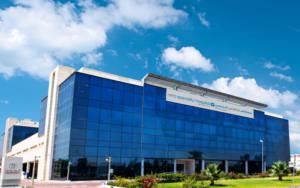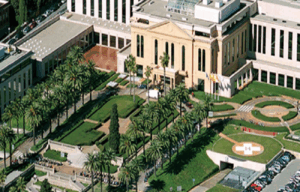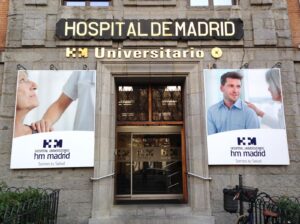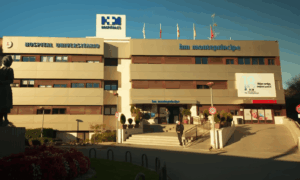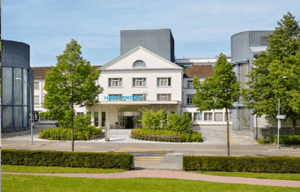ART Procedures (IVF, ICSI)
Assisted reproductive technologies (ART) have become an effective solution for those who want to become parents but are unable to do so naturally. For couples in whom germ cell maturation (sperm and oocytes) is not impaired, in vitro fertilization (IVF) is indicated.
According to the European Society of Human Reproduction and Embryology (ESHRE), the proportion of children born with the help of assisted technologies in developed countries ranges from 3% to 5%.
The global average success rate of artificial fertilization is 30-35%, while European clinics achieve 50-55% success rates per IVF cycle. This means that more than half of couples become parents after their very first attempt. For this reason, couples who have struggled with infertility treatment for many years in their home countries often choose IVF in leading international clinics.
Features of ART procedures in leading European clinics
World-class medical centers employ a unique method of in vitro maturation (IVM) of oocytes in laboratory conditions as part of IVF. This technique is an excellent alternative to stimulated oocyte retrieval, particularly when exogenous (externally administered) hormone therapy is problematic or poses health risks.
According to the Fertility and Sterility Journal, the oocyte maturation rate in European clinics’ laboratories is 80%, which is considered a very high indicator in reproductive medicine.
Indications for IVM:
- Liver diseases, where administration of high-dose hormone therapy is contraindicated
- Polycystic ovary syndrome (PCOS)
- Precancerous and cancerous conditions of the reproductive organs and breast
- Benign hormone-dependent tumors and endometriosis
IVF procedure with in vitro oocyte maturation
Below is the scheme of IVF with in vitro oocyte maturation. In this procedure, oocytes measuring 5-10 mm are retrieved from existing follicles. The maturation process then takes place in an incubator under controlled conditions.
Oocytes are female germ cells formed during fetal development in the process of oogenesis. A girl is born with a predetermined number of oocytes. During each subsequent cycle, one oocyte matures within the dominant follicle.
The distinctive feature of the IVM method is that immature oocytes are collected under ultrasound guidance. After retrieval, oocytes are placed in specialized culture media enriched with follicle-stimulating hormone (FSH) and luteinizing hormone (LH). Within 24-36 hours, they reach full maturity (metaphase II) and become ready for fertilization.
Another unique ART method is ICSI (intracytoplasmic sperm injection), which allows targeted fertilization of the oocyte. It is used in cases of male infertility, when sperm motility and quality are reduced.
In top clinics, when spermatozoa show severe damage factors, there is also the possibility of “planning” the child’s sex by performing preimplantation genetic analysis before embryo transfer.
TOP Clinics
-
 Istanbul, Turkey Acibadem Altunizade
Istanbul, Turkey Acibadem Altunizade -
 Istanbul, Turkey Acıbadem Ataşehir Clinic
Istanbul, Turkey Acıbadem Ataşehir Clinic -
 Antalya, Turkey Hospital Medical Park Antalya
Antalya, Turkey Hospital Medical Park Antalya -
 Dubai, UAE NMC Healthcare
Dubai, UAE NMC Healthcare -
 Istanbul, Turkey Hospital “Memorial Şişli”
Istanbul, Turkey Hospital “Memorial Şişli” -
 Milan, Italy “La Madonnina” clinic
Milan, Italy “La Madonnina” clinic -
 Milan, Italy San Raffaele University Hospital
Milan, Italy San Raffaele University Hospital -
 Abu Dhabi, UAE Burjeel Hospital Abu Dhabi
Abu Dhabi, UAE Burjeel Hospital Abu Dhabi -
 Vienna, Austria Debling Private Clinic
Vienna, Austria Debling Private Clinic -
 Incheon, South Korea Gil Medical Center at Gachon University
Incheon, South Korea Gil Medical Center at Gachon University -
 Lausanne, Switzerland Clinique Montchoisy
Lausanne, Switzerland Clinique Montchoisy -
 Nyon, Switzerland Clinique Genolier
Nyon, Switzerland Clinique Genolier -
 Istanbul, Turkey “Memorial Ataşehir” Clinic
Istanbul, Turkey “Memorial Ataşehir” Clinic -
 Bodrum, Turkey Acibadem Bodrum Hospital
Bodrum, Turkey Acibadem Bodrum Hospital -
 Barcelona, Spain QuironSalud Barcelona Hospital
Barcelona, Spain QuironSalud Barcelona Hospital -
 Barcelona, Spain Dexeus University Hospital
Barcelona, Spain Dexeus University Hospital -
 Barcelona, Spain Medical Center "Teknon"
Barcelona, Spain Medical Center "Teknon" -
 Barcelona, Spain University Hospital Barnaclinic+
Barcelona, Spain University Hospital Barnaclinic+ -
 Madrid, Spain University Clinic HM Madrid
Madrid, Spain University Clinic HM Madrid -
 Madrid, Spain University Hospital HM Monteprincipe
Madrid, Spain University Hospital HM Monteprincipe -
 Gebze, Turkey Anadolu Clinic
Gebze, Turkey Anadolu Clinic -
 Zurich, Switzerland Hirslanden Clinic
Zurich, Switzerland Hirslanden Clinic -
 Madrid, Spain Quiron Salud University Hospital
Madrid, Spain Quiron Salud University Hospital -
 Lugano, Switzerland Saint Anna Clinic
Lugano, Switzerland Saint Anna Clinic -
 Geneva, Switzerland Clinique des Grangettes
Geneva, Switzerland Clinique des Grangettes -
 Seoul, South Korea Samsung Medical Center
Seoul, South Korea Samsung Medical Center -
 Seoul, South Korea Medical Center at Ewha Womans University
Seoul, South Korea Medical Center at Ewha Womans University -
 SNUH
SNUH -
 Seoul, South Korea Asan Medical Center
Seoul, South Korea Asan Medical Center -
 Jerusalem, Israel Hadassah Medical Center
Jerusalem, Israel Hadassah Medical Center -
 Petah Tikva, Israel Medical Center “Rabin”
Petah Tikva, Israel Medical Center “Rabin” -
 Istanbul, Turkey Medipol Mega University Hospital
Istanbul, Turkey Medipol Mega University Hospital -
 Istanbul, Turkey Istanbul Florence Nightingale Hospital
Istanbul, Turkey Istanbul Florence Nightingale Hospital -
 Geneva, Switzerland Hirslanden Clinique La Colline
Geneva, Switzerland Hirslanden Clinique La Colline -
 Geneva, Switzerland Generale-Beaulieu
Geneva, Switzerland Generale-Beaulieu


